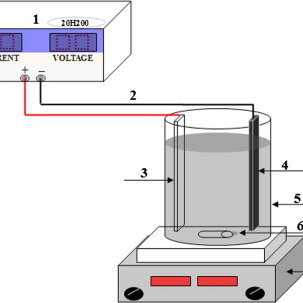Innovating for Impact: How Knowledge Management Revolutionizes Medical Device Development
In the ever-evolving landscape of healthcare, innovation stands as a cornerstone for improving patient outcomes, enhancing quality of care, and driving transformative change. Nowhere is this more evident than in the realm of medical device development, where advancements in technology and a deeper understanding of human physiology converge to create groundbreaking solutions to complex medical challenges. At the heart of this innovation lies Knowledge Management (KMed), a strategic approach to harnessing and leveraging information, expertise, and insights to drive meaningful impact in medical device development.
The Landscape of Medical Device Development: Challenges and Opportunities
Medical device development is a dynamic and disposable syringe multifaceted process that spans ideation, design, prototyping, testing, regulatory approval, and commercialization. At each stage of the development lifecycle, engineers, scientists, clinicians, and regulatory experts collaborate to translate innovative ideas into tangible solutions that address unmet clinical needs and improve patient care.
However, the journey from concept to market-ready product is fraught with challenges. Regulatory hurdles, resource constraints, market competition, and evolving patient expectations present formidable barriers to innovation in the medical device industry. Moreover, the rapid pace of technological advancement and the increasing complexity of healthcare delivery further underscore the need for a systematic and collaborative approach to medical device development.
The Role of Knowledge Management in Medical Device Development
Knowledge Management (KMed) serves as a catalyst for innovation and excellence in medical device development by facilitating the effective capture, organization, dissemination, and application of knowledge across the product lifecycle. By leveraging insights from diverse sources, including clinical research, regulatory guidelines, user feedback, and market trends, KMed enables organizations to make informed decisions, mitigate risks, and accelerate time-to-market for novel medical devices.
1. Knowledge Capture and Documentation:
One of the foundational pillars of KMed in medical device development is the systematic capture and documentation of critical knowledge assets, including design specifications, regulatory requirements, intellectual property, and clinical data. By codifying tacit and explicit knowledge into accessible repositories, organizations can preserve institutional expertise, foster cross-functional collaboration, and facilitate seamless knowledge transfer across project teams and departments.
2. Knowledge Sharing and Collaboration:
Effective collaboration lies at the heart of successful medical device development initiatives. KMed platforms provide centralized hubs for sharing information, exchanging ideas, and soliciting feedback from stakeholders across the organization and beyond. Whether through virtual collaboration tools, project management software, or cross-functional workshops, KMed fosters a culture of transparency, accountability, and innovation that drives continuous improvement and excellence in product development.
3. Knowledge Integration and Decision Support:
In an era of rapid technological innovation, the integration of disparate sources of knowledge is essential for making informed decisions and optimizing product design and functionality. KMed systems leverage advanced analytics, simulation tools, and predictive modeling techniques to analyze complex datasets, identify design constraints, and optimize performance parameters. By harnessing the power of data-driven insights, organizations can streamline the development process, reduce development costs, and enhance the safety and efficacy of medical devices.
4. Knowledge Preservation and Regulatory Compliance:
Navigating the regulatory landscape is a critical aspect of medical device development. KMed platforms help organizations stay abreast of evolving regulatory requirements, standards, and compliance frameworks, ensuring adherence to quality and safety guidelines throughout the product lifecycle. By documenting design changes, test results, and regulatory submissions in a centralized repository, organizations can demonstrate regulatory compliance, expedite the approval process, and mitigate the risk of compliance-related issues.
Challenges and Considerations
While the potential benefits of KMed in medical device development are profound, its implementation is not without challenges. Organizations must address issues related to data security, privacy, intellectual property rights, and interoperability to maximize the value of KMed initiatives. Moreover, fostering a culture of knowledge sharing and collaboration requires leadership commitment, organizational alignment, and investment in training and development programs to empower employees and build cross-functional teams.
Furthermore, as medical device development becomes increasingly globalized and interconnected, organizations must navigate cultural differences, language barriers, and geopolitical considerations to effectively leverage the collective wisdom of diverse stakeholders and markets.
Conclusion
In conclusion, Knowledge Management (KMed) holds immense promise for revolutionizing medical device development and driving meaningful impact in healthcare. By fostering collaboration, facilitating knowledge exchange, and enabling data-driven decision-making, KMed empowers organizations to innovate with purpose, deliver value to patients and healthcare providers, and navigate the complexities of a rapidly evolving healthcare landscape.
As medical device developers strive to create solutions that improve patient outcomes, enhance quality of life, and address unmet clinical needs, the strategic deployment of KMed emerges as a critical enabler of success. By embracing a culture of innovation, continuous learning, and interdisciplinary collaboration, organizations can unlock new frontiers of possibility, transform healthcare delivery, and make a lasting impact on the lives of patients and communities worldwide.



![Afiyu Kent Cash pot [Live Results Today]](https://newsviko.co/wp-content/uploads/2023/12/Add-a-heading-768x403.png)


